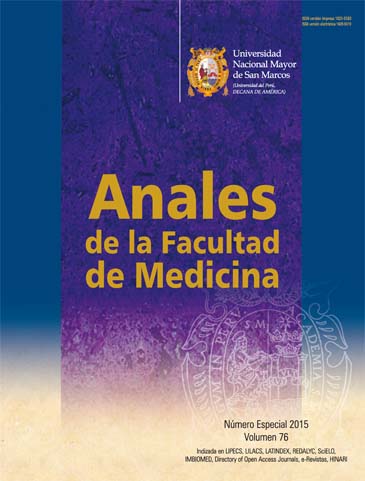District population dispersion index (IDP) for estimating human resources needs at primary health care level
DOI:
https://doi.org/10.15381/anales.v76i0.10969Keywords:
Policies, strategies, equity, human resources.Abstract
Introduction: The Ministry of Health of Peru (MINSA) is implementing policies and strategies to ensure equitable access to care, timeliness and quality. Sufficient human resources (RHUS) properly distributed in the different levels of care is needed to accomplish this. Thus, it is essential to adequately estimate the gap of RHUS, especially at primary care level. Objectives: To develop, validate and implement a district population dispersion index (IDP) characterizing the district, and to provide dispersion in estimating RHUS gap at primary care level. Design: Observational and analytical study. Location: Directorate General Management Human Resources Development MINSA, Peru. Participants: All districts of Peru were considered for analysis. Interventions: An exploratory factor analysis was performed. It considered demographic, social and economic access to health services, obtained from the Population and Housing Censuses (2005 and 2007) and the National Continuing Survey (2006) variables. The IDP was structured and validated against the official list of villages and the perception of health officers of regional governments. Main outcome measures: IDP. Results: Out of 1 831 municipalities evaluated, we classified 1 277 districts as rural, according to the classification of the Presidency of the Council of Ministers (PCM). They were considered as scattered by the methodology. Concordance was 82%. Conclusions: The IDP is a useful indicator to estimate the gaps of RHUS for health services at primary care level in Peru.Downloads
Published
2015-03-16
Issue
Section
Trabajos originales
License
Copyright (c) 2015 Carmela Álvarez, María Z. Cuzco Ruiz, Felipe Peralta Quispe

This work is licensed under a Creative Commons Attribution-NonCommercial-ShareAlike 4.0 International License.
Those authors who have publications with this magazine accept the following terms:
- Authors will retain their copyrights and guarantee the journal the right of first publication of their work, which will be simultaneously subject to Creative Commons Attribution License that allows third parties to share the work as long as its author and its first publication this magazine are indicated.
- Authors may adopt other non-exclusive licensing agreements for the distribution of the version of the published work (eg, deposit it in an institutional electronic file or publish it in a monographic volume) provided that the initial publication in this magazine is indicated.
- Authors are allowed and recommended to disseminate their work over the Internet (eg: in institutional telematic archives or on their website) before and during the submission process, which It can produce interesting exchanges and increase quotes from the published work. (See El efecto del acceso abierto ).
How to Cite
1.
Álvarez C, Cuzco Ruiz MZ, Peralta Quispe F. District population dispersion index (IDP) for estimating human resources needs at primary health care level. An Fac med [Internet]. 2015 Mar. 16 [cited 2025 Jun. 2];76:41-8. Available from: https://revistasinvestigacion.unmsm.edu.pe/index.php/anales/article/view/10969



